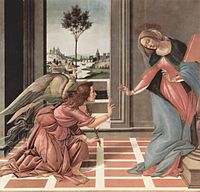Art Nouveau (new art) is an International Movement, not a style. It reached its height at the end of the 19th Century, it became popular due to its style of Art, Architecture, Applied Art and the Decorative Arts. In 1900 World's Fair in Paris is where Art Nouveau was established as the first new decorative style of the twentieth century. This movement very soon became a part of everyday life, with different styles being used for Furniture and Architecture. This movements popularity grew due to the help of a Czech artist Alphonse Mucha most known for his images of women, he influenced and helped to direct the way this movement was going to uptake. Much of his work he produced for example paintings, posters, advertisements and book illustrations, as well as jewellery, carpets, theatre sets and wallpaper was all initially called the Mucha Style but later became to be known as Art Nouveau. Below are two pieces from his collection.


A very interesting designer was Louis Comfort Tiffany, an American designer he trained as a painter in the 1860s with the artist Samuel Coleman. Tiffany had close ties with European Art Nouveau; he made a series of windows, glassware and lamps all ending up appearing at the Paris gallery of Siegfried Bing. In 1902 he became design director of the family silver firm Tiffany & co. Show his glassware
William Morris (1834–1896) was the single most influential designer of the nineteenth century; he was a designer, writer and socialist. Trained as an architect, Morris mixed in Pre – Raphaelite circles before founding his own firm in 1861, which became Morris and Co in 1875. Through his ideas on utility and beauty in design, coupled with his socialist principles, he became the defining figure of the Art and Crafts Movement. He drew on medieval motifs and designed furniture, stained glass, wallpaper and fabrics. His use of stylized floral and organic forms in his patterns was influential in the evolution of Art Nouveau. Show William Morris pictures
The Pre - Raphaelite Brotherhood was made up of a group of English painters, poets and critics, founded in 1984 by William Holman Hunt, John Everett Millais and Dante Gabriel Rossetti. The three founders were soon joined by William Michael Rossetti, James Collinson, Frederic George Stephens and Thomas Woolner to form the seventh member "brotherhood". The grouped formed with the intention to reform art by rejecting what they considered to be mechanistic, the brother hood had high regard for classicism they believe that it poses elegant compositions. The Brother hood objected the influence of Sir Joshua Reynolds, the founder of the English Royal Academy of Arts, they called him "Sir Sloshua", believing that his broad technique was a sloppy and formulaic form of academic Mannerism. In contrast, they wanted to return to the abundant detail, intense colours, and complex compositions of the cultural and artistic events of 15th century Italy are collectively referred to as the Quattrocento. Quattrocento encompasses the artistic styles of the late Middle ages (most notably International Gothic) and the early Renaissance.
The Pre-Raphaelites have been considered the first avant-garde movement in art, though they have also been denied that status, because they continued to accept both the concepts of history painting and of mimesis, or imitation of nature, as central to the purpose of art. However, the Pre-Raphaelites undoubtedly defined themselves as a reform-movement, created a distinct name for their form of art, and published a periodical, The Germ, to promote their ideas. Their debates were recorded in the Pre-Raphaelite Journal.
The Pre-Raphaelites have been considered the first avant-garde movement in art, though they have also been denied that status, because they continued to accept both the concepts of history painting and of mimesis, or imitation of nature, as central to the purpose of art. However, the Pre-Raphaelites undoubtedly defined themselves as a reform-movement, created a distinct name for their form of art, and published a periodical, The Germ, to promote their ideas. Their debates were recorded in the Pre-Raphaelite Journal.
William Holman Hunt, one of the founders of The Pre-Raphaelites work was not initially successful, and was widely attacked in the art press for their alleged clumsiness and ugliness. He achieved some early note for his intensely naturalistic scenes of modern rural and urban life, such as The Hireling Shepherd and The Awakening Conscience. However, it was with his religious paintings that he became famous, initially The Light of the World (1851-1853, now in the chapel at Keble College, Oxford; a later version (1900) toured the world and now has its home in St Paul's Cathedral. In the mid 1850s Hunt travelled to the Holy Land in search of accurate topographical and ethnographical material for further religious works, and to “use my powers to make more tangible Jesus Christ’s history and teaching”; there he painted The Scapegoat, The Finding of the Saviour in the Temple and The Shadow of Death, along with many landscapes of the region. Hunt also painted many works based on poems, such as Isabella and Lady of Shalott. For Hunt it was the duty of the artist to reveal the correspondence between sign and fact. Out of all the members of the Pre-Raphaelite Brotherhood Hunt remained most true to their ideals throughout his career. He eventually had to give up painting because failing eyesight meant that he could not get the level of quality that he wanted. His last major work, The Lady of Shalott, was completed with the help of an assistant (Edward Robert Hughes). Below are The Scapegoat, The Hireling Shepherd and The Light of the World.
















